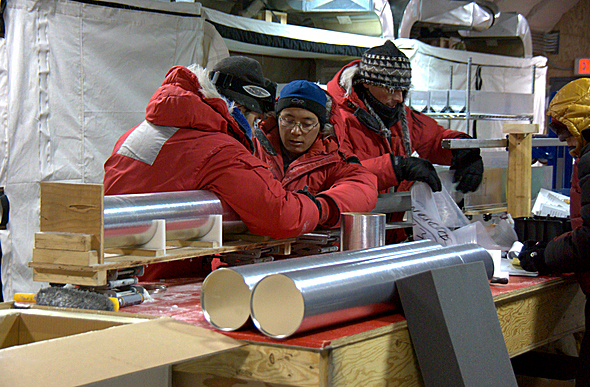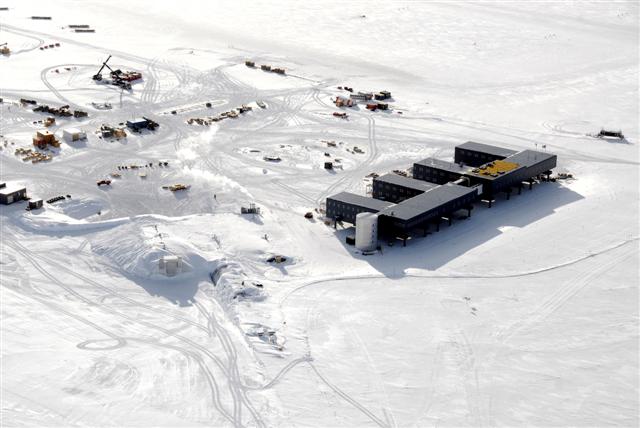Page 2/2 - Posted August 20, 2010
Next up: Ice core at the South Pole?The end of drilling this year isn’t the end of the fieldwork. WAIS Divide scientists hope to have at least two more field seasons before the camp is removed. In the first year, they will send instruments into the borehole that can, for example, detect volcanic ash layers in the ice that will be useful for helping date the core. Next year they also plan to drop down a new type of instrument called a replicate coring drill that the engineers at UW-Madison’s Ice Drilling Design and Operations That system will send a drill down the WAIS Divide borehole to areas of special interest to scientists, such as sections of ice that contain a record of how changes in greenhouse gases influenced changes in climate. The smaller drill will fit into the original 17-centimeter-wide hole and will bore into the side of the original borehole to collect additional ice. “It is like copying the most interesting sections of a book so more people can study it. Nobody has really done that before,” Taylor said. And after that? “We’re already talking about where to take the drill next,” Taylor said. Next up could be the South Pole, where the U.S. Antarctic Program The site could also offer an ice core as old as 120,000 years, from the last warm period when temperatures were slightly warmer than they are today but atmospheric levels of carbon dioxide were lower. Scientists in Greenland just completed the North Greenland Eemian Ice Drilling project Taylor said the extreme cold at South Pole, where temperatures average about minus 50 degrees centigrade, are particularly good for preserving the gases trapped in the ice. By comparing the gas records from different ice cores, researchers can ensure the data truly reflect atmospheric conditions and were not influenced by how the gases are preserved in the ice. Taylor said he expects the research community will begin submitting proposals for such a project by next year. But that effort is still years down the road. Taylor is focused on getting to the bottom of the West Antarctic Ice Sheet before the WAIS Divide camp closes in January 2011. “The finish line is essentially there,” he said. “It feels great.” NSF-funded research in this story: Kendrick Taylor, Desert Research Institute, Award Nos. 0944191, 0440817, 0440819, 0944348, 0739780 and 0230396 |



For USAP Participants |
For The Public |
For Researchers and EducatorsContact UsU.S. National Science FoundationOffice of Polar Programs Geosciences Directorate 2415 Eisenhower Avenue, Suite W7100 Alexandria, VA 22314 Sign up for the NSF Office of Polar Programs newsletter and events. Feedback Form |



